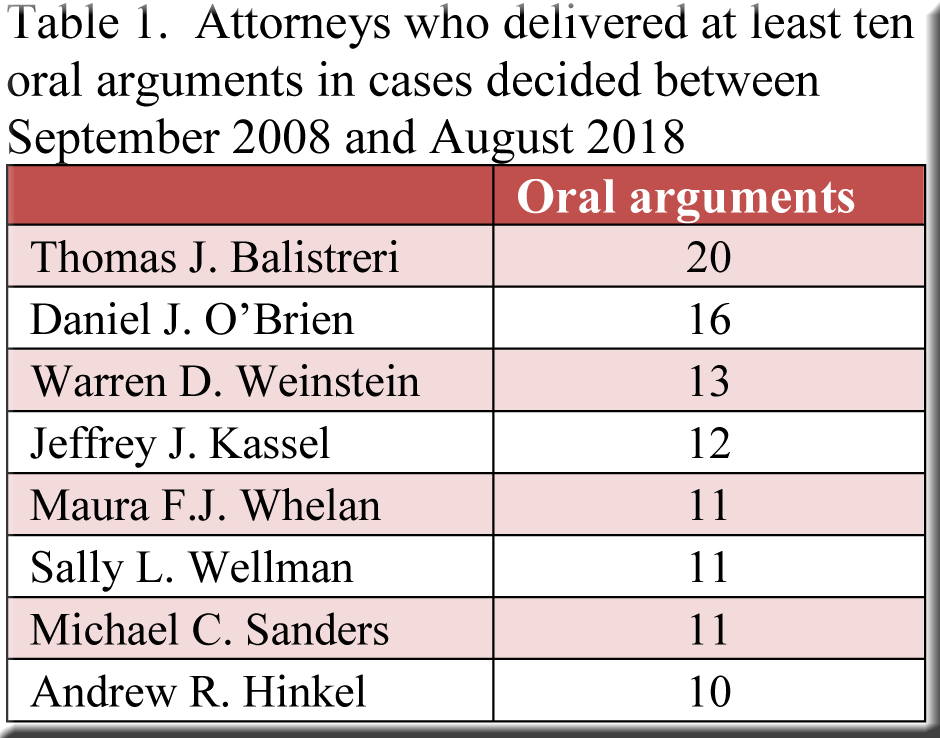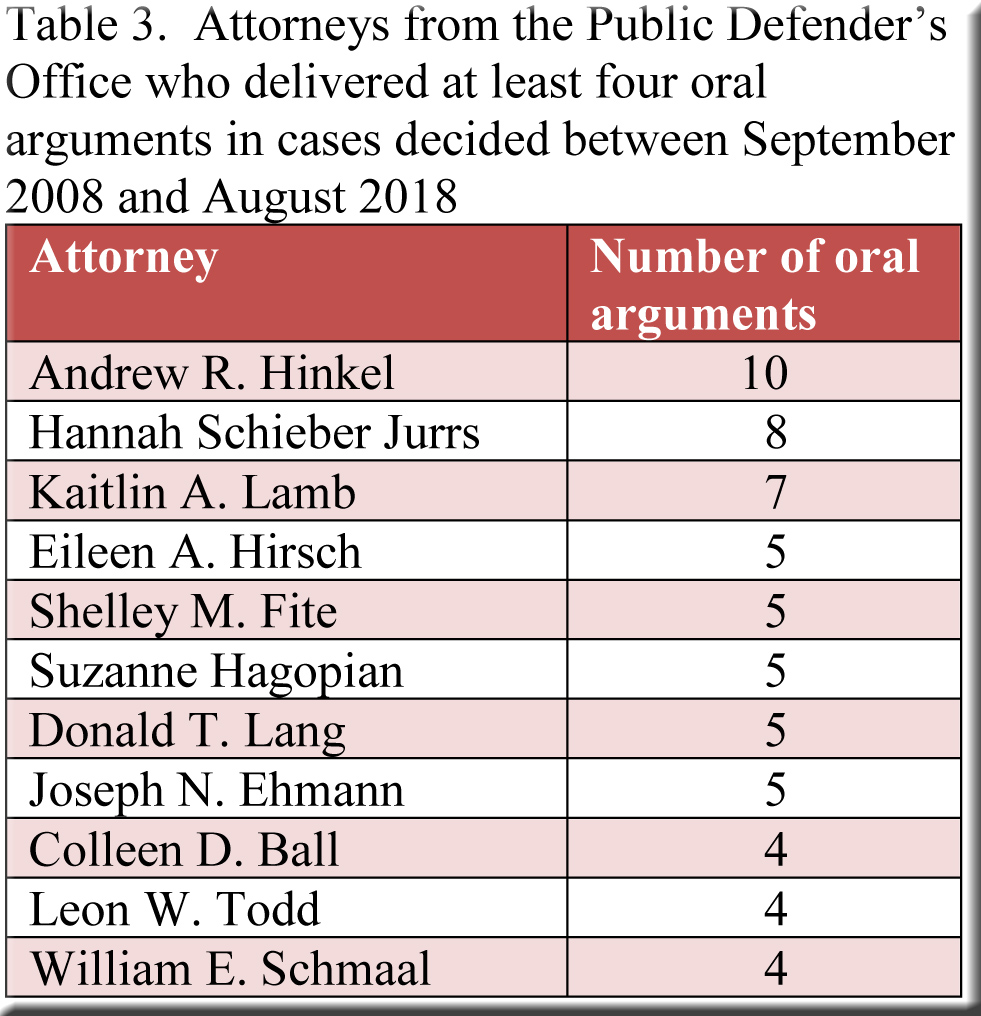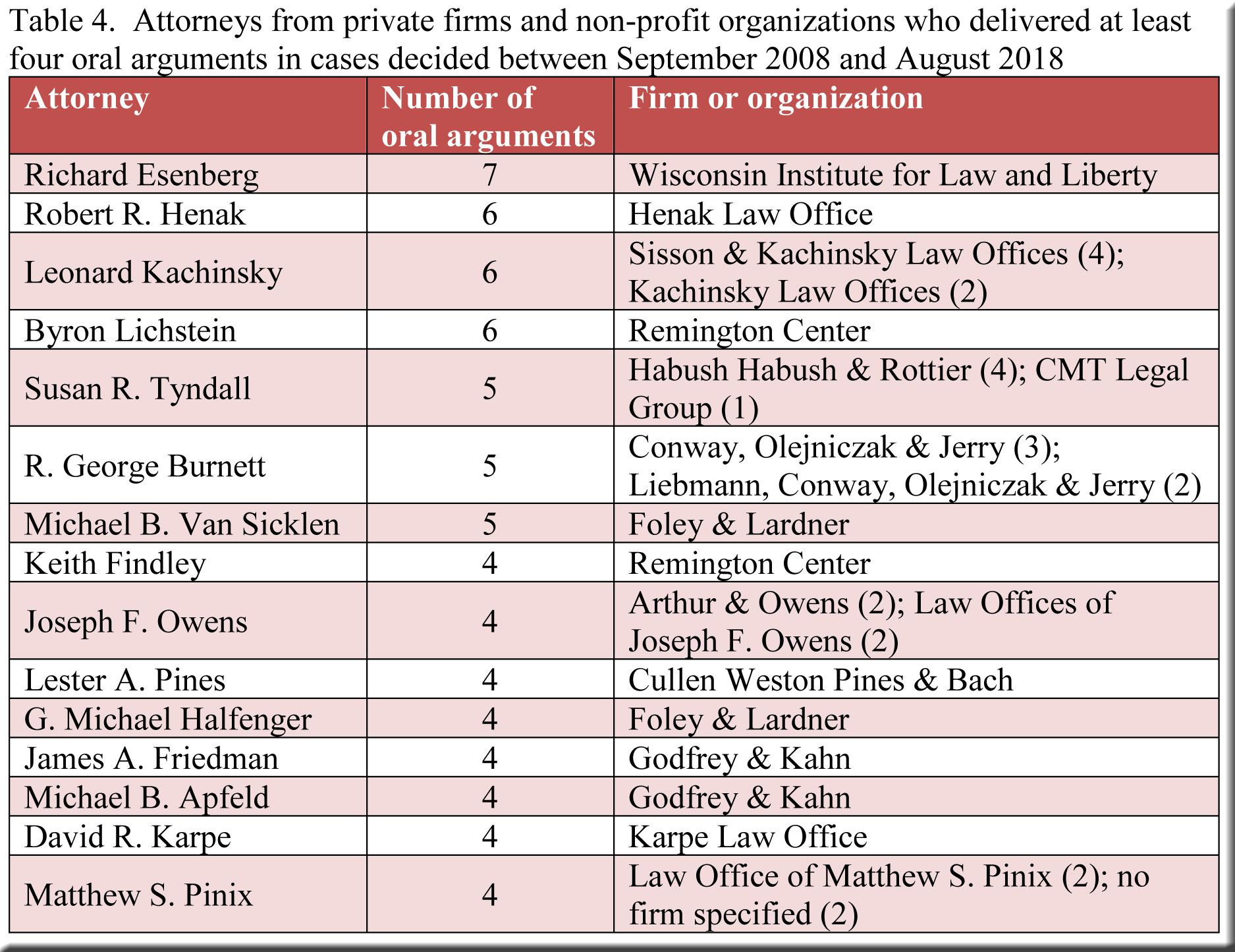Today we examine the volume of oral arguments at the Wisconsin Supreme Court over the past ten terms and acknowledge the work of attorneys who have been the most active in this regard. The scale of their labors is extensive, as a legion of 724 lawyers delivered a total of 1261 oral arguments in cases decided between September 1, 2008, and August 31, 2018.[1] The large majority of these lawyers—68% (492/724)—appeared only once to argue before the justices, while, at the other end of the frequency spectrum, 106 lawyers (15% of the 724 total) each presented at least three oral arguments and accounted for 41% of the 1261 arguments conducted.
Among these 724 attorneys, the dominance of the Attorney General’s Office, while hardly surprising, is nonetheless striking. If we rank all 724 lawyers according to the number of oral arguments that they delivered, nine of the top ten came from the Attorney General’s Office, led by Thomas Balistreri, who totaled 20 oral arguments in cases decided during this period. Only the State Public Defender’s Office—represented by Andrew Hinkel, in eighth place with 10 oral arguments—broke the monopoly of the Attorney General’s Office in the top ten (indeed, the top thirteen) positions.
Heading our ranked list are eight people (Table 1) who engaged in ten or more oral arguments—that is, an average of at least one every term.
As noted above, everyone in Table 1 except Andrew Hinkel represented the Attorney General’s Office. Of the top 106 lawyers in our ranked list (each of whom presented at least three oral arguments), 29% (31/106) spoke on behalf of the Attorney General’s Office, and they accounted for 43% of the 517 oral arguments delivered by this group of 106 attorneys.[2] The Public Defender’s Office provided by far the next largest contingent—18% of the 106 attorneys and 16% of their oral arguments.[3]
We can identify the most active oral advocates in these two state agencies by raising the “cut-off” line to four oral arguments in the period under consideration. This demanding standard yields Table 2—devoted to the Department of Justice (thereby including the Solicitor General’s Office as well as the Attorney General’s Office)—and Table 3, spotlighting the Public Defender’s Office.
Although representatives of private law firms did not find opportunities to address the justices as frequently as did attorneys from the Department of Justice or the Office of the Public Defender, there were a number who appeared at least four times, and they are recognized in Table 4, along with three attorneys who spoke on behalf of non-profit organizations.
Finally, it is worth noting the much greater presence of women among attorneys who delivered at least four oral arguments for the Department of Justice (Table 2) and the Public Defender’s Office (Table 3) than among lawyers conferred such responsibility by private firms and the three non-profits. In fact, as displayed on the bottom line of Table 5, only one woman (Susan Tyndall) was deployed by private firms and the non-profits with sufficient frequency to make the cut—during a decade when women accounted for over half the oral arguments listed in Table 3 and over a third in Table 2.
[1] We are counting oral arguments in cases decided during the past ten terms. This includes a few oral arguments conducted before September 1, 2008, in cases that were not decided until after that date. Likewise, we are excluding a few oral arguments delivered before August 31, 2018, in cases not decided until the 2018-19 term.
Oral arguments presented on behalf of amicus parties are included.
If two lawyers split an oral argument between them, both lawyers are credited.
When two cases were consolidated, and an attorney’s oral argument covered both cases, it is counted as a single argument for that attorney.
[2] These figures include Clayton Kawski and the two arguments that he delivered as an assistant attorney general (but not his argument while at Michael Best & Friedrich).
[3] These figures include Michelle Velasquez and the two arguments that she delivered for the Public Defender’s Office (but not her argument while at the Civitas Law Group





I am grateful to have been informed that Sara Shaeffer should be credited with five oral arguments—three as Sara Shaeffer plus two previous ones as Sara Larson. The tables and text have been corrected in light of this information.
Thank you to a reader who informed me that Lisa Lawless should be credited with three oral arguments—two as Lisa Lawless and a previous one as Lisa Arent. The chart listing everyone who delivered at least three oral arguments has been updated, as has the text itself.